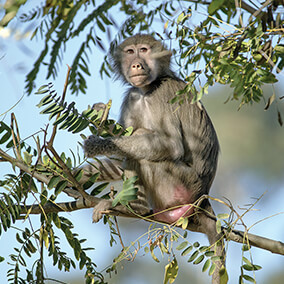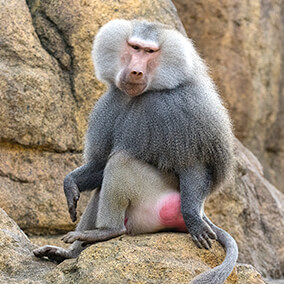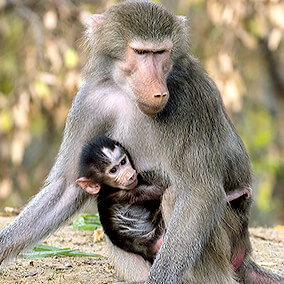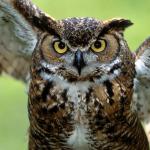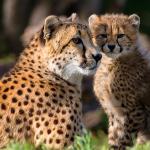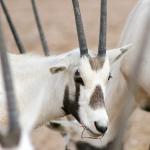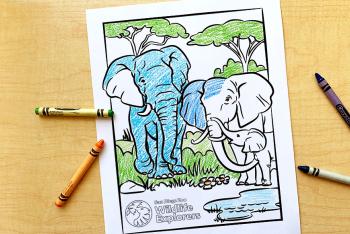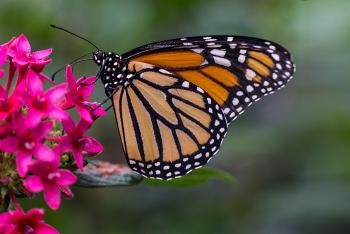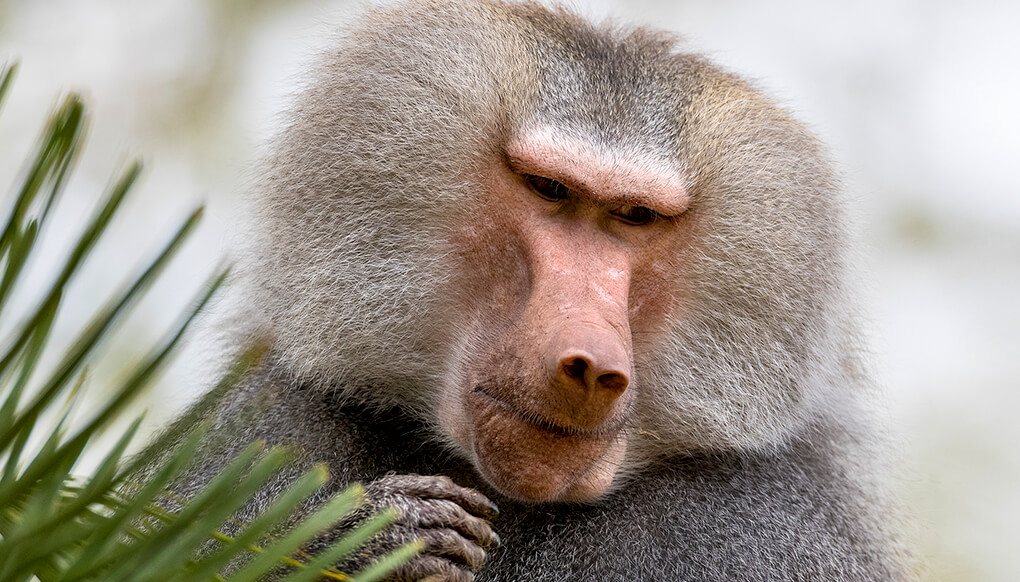
Hamadryas baboon

Mammals


Stable
facts

Male hamadryas baboons can be twice as big as females.

Hamadryas baboons eat mostly grass, seeds, leaves, and roots. Sometimes they also eat insects, scorpions, and small lizards and mammals.
Hamadryas baboons live near tall, rugged cliffs. Their habitat also includes steppes, plains, and brushland.
description
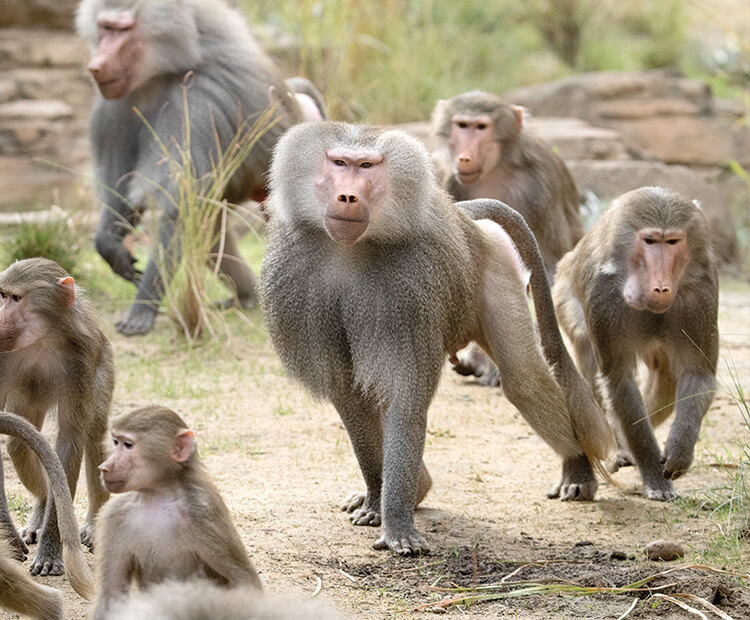
Description
Males and females
Hamadryas (hah-mah-DRY-US) baboons are big, strong monkeys. Unlike the flat faces of most monkeys, a baboon’s face has a long snout and a squared-off, dog-like muzzle. The face, rump, hands, and feet are bare, but fur covers the rest of the body. Females are a light, olive-brown. Males are much lighter, with a long, silvery “cape” that extends from the head and shoulders to the rump. A male also has cheek tufts that are silvery white.
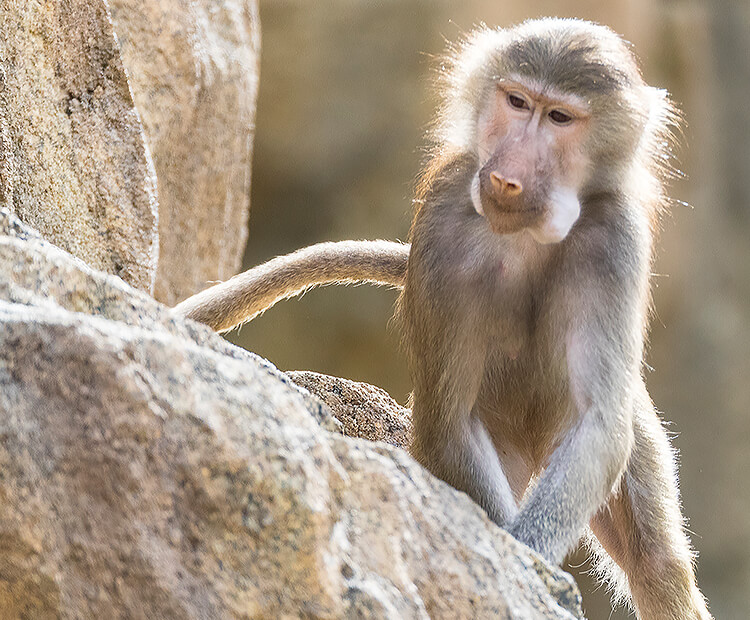
Food storage
Baboons belong to a group of monkeys known as the cheek-pouched monkeys, because of compartments in their cheeks that stretch to store food. It’s a great adaptation: a baboon can quickly pop food into its mouth, and later find a safe spot to eat it.
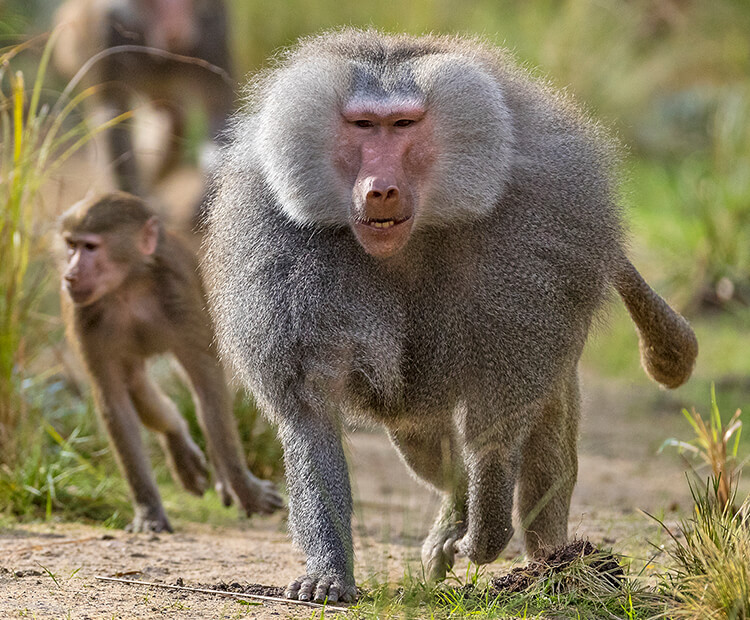
Social order
Hamadryas baboons live in groups called one-male units (OMU). An OMU includes a male leader along with several females and their offspring. A male that doesn’t lead his own unit might follow an OMU, or he might live alone. Several OMUs make up a band, and several bands make up a troop.
These big monkeys wake at sunrise and get right to it: chasing, playing, and social grooming. After a few hours of fun, they begin their “daily march.” As they travel, they break into groups called bands, and the bands separate into even smaller OMUs to look for food. A band reunites for an afternoon water and rest break. OMUs have time for more foraging before it’s time to return to their sleeping cliffs at sunset.


